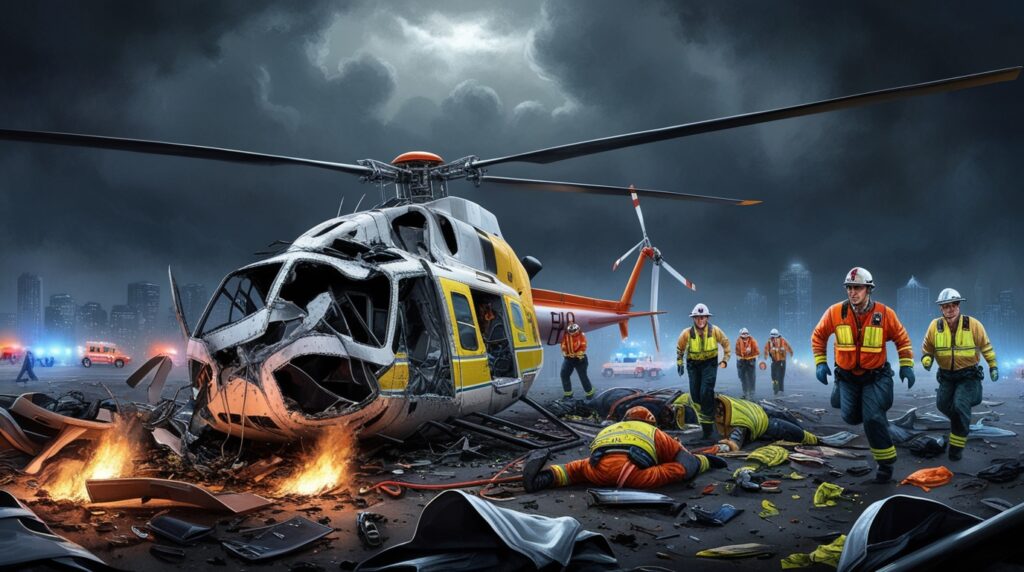Greetings, and thank you for visiting this blog post. Last weekend, a tragic incident occurred in Houston when a helicopter went down, killing four people. Some reports, however, have indicated that the radio mast, which the chopper struck, had not had any operational lights for days before the incident.
With that, questions have also risen about the state of safety management and upkeep of these structures. What if this lighting problem was the cause of the helicopter accident? Allow us to dig into the particulars regarding this heart-rending incident.
Let’s dive in!
Introduction to the Houston Helicopter Crash

On Sunday, a helicopter loaded with four individuals went down into a radio tower located in Houston, Texas. All four occupants of the plane died immediately upon impact since the accident took place in the daytime.
However, none were alive. In light of the incident, the people present at that point and time were grieving and looking for answers that could explain such a terrific incident.
The out tower, which aids in visibility while in low light or poor weather conditions, was not in operation.
Therefore, it calls into question whether routine inspections were done to ensure that all functioning elements of the tower were in good condition and whether this failure was instrumental in the accident.
The Significance of Lighting on Buildings.
For instance, tall structures like radio towers must have lights in operation to protect the aircraft flying in their proximity. These lights assist pilots to orient themselves in the airspace & avoid colliding with such structures, especially in poor visibility.
The Federal Aviation Administration (FAA) specifies that all towers above 200 feet high should have red or white lights to alert the approaching aircraft. In this respect, while the crash occurred in broad daylight, there are grounds that the non-functioning lights of the tower may have posed some threat.
At this point, the navigating apparatus investigation’s attention is directed toward whether the absence of operational lights was the primary reason for the crash or merely played a role.
Ongoing Investigation and Questions Raised

The National Transportation Safety Board (NTSB) and the FAA are in the process of a major investigation and analysis to find the reason for the occurrence of the crash.
They look into the helicopter’s route, weather conditions during that time frame, and the radio tower’s status. The non functioning lighting remains a significant area of focus because it concerns the tower operators about whether the building is well-serviced.
Families of the victims and the society at large are requesting an explanation. Would it be fair to say that the air crash was caused by the light on the tower not being repaired on time? Did the pilot see the tower before the crash took place? These are some of the questions that are currently being inquired into.
As the investigation progresses, it is expected that all these details will assist in piecing together the events that led to the horrible crash.
Conclusion
Appreciate your time and energy in reading this piece. Earlier this week, this unfortunate event involving a helicopter crash in Houston underscored the essence of lighting in the air transport system.
The case of inadequate lights on the radio tower probably led to the crash, causing a lot of questions, including whether this would have been the case had the breakdown rectification been done on time.
Should more stringent safety standards mitigate this occurrence in the future? The probe provides the necessary information and reduces the chances of more losses.




